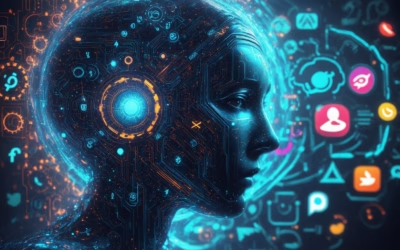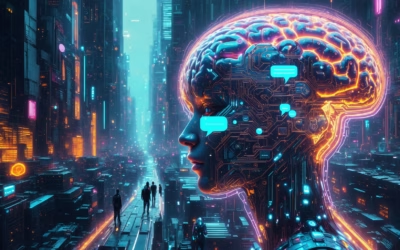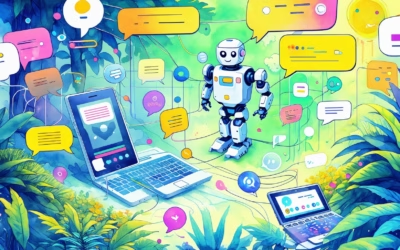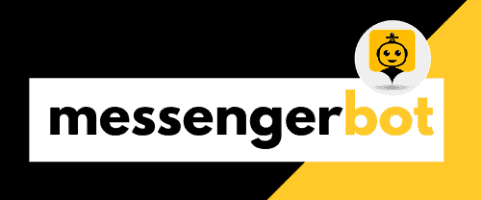In today’s digital landscape, chatbot code has emerged as a pivotal element in enhancing user interaction and automating responses across various platforms. This comprehensive guide, titled How to Code a Chatbot: A Comprehensive Guide to Chatbot Code and Python Programming, will delve into the essentials of coding a chatbot, particularly focusing on the powerful capabilities of Python for chatbot development. We will explore the fundamentals of chatbots in Python, including their applications and the significance of coding in their creation. Additionally, we will address common queries such as whether you can create your own chatbot, the availability of free chat AI solutions, and the programming languages best suited for chatbot development. By the end of this article, you will have a clear understanding of how to code a chatbot, complete with practical examples and best practices to ensure your chatbot performs effectively. Whether you are a beginner or looking to refine your skills, this guide will equip you with the knowledge and resources needed to embark on your chatbot coding journey.
How to Code for Chatbot?
Understanding Chatbot Code Basics
Overview of Chatbots and Their Applications
Chatbots have become an integral part of digital communication, serving various applications across industries. They enhance user interaction by providing automated responses, facilitating customer service, and streamlining engagement processes. By leveraging artificial intelligence, chatbots can manage inquiries efficiently, making them invaluable tools for businesses looking to improve customer experience. From handling FAQs to guiding users through complex processes, chatbots can significantly reduce the workload on human agents while ensuring timely responses.
Importance of Coding in Chatbot Development
Coding is a fundamental aspect of chatbot development, as it determines how effectively a chatbot can interact with users. Here’s how to code for a chatbot effectively:
- Define the Purpose of Your Chatbot: Clearly outline what you want your chatbot to achieve, whether it’s customer support, information dissemination, or transaction facilitation.
- Choose the Platform for Deployment: Decide where your chatbot will be available, such as websites or messaging apps like Facebook Messenger.
- Select a Chatbot Development Framework: Popular frameworks include Dialogflow, Microsoft Bot Framework, and Rasa, each offering unique features for building chatbots.
- Design the Conversation Flow: Map out conversation paths using tools like Botmock or Lucidchart to visualize user intents and responses.
- Develop the Chatbot Logic: Code the backend using languages like Python or JavaScript, incorporating natural language processing (NLP) for better understanding of user inputs.
- Test Your Chatbot Thoroughly: Conduct extensive testing to identify bugs and improve user experience.
- Train Your Chatbot: Continuously train your chatbot with real conversation data to enhance its accuracy.
- Gather User Feedback and Iterate: Collect feedback post-deployment to refine the chatbot’s capabilities based on user interactions.
By following these steps, you can effectively code a chatbot that meets user needs and enhances engagement. For additional resources on chatbot development, consider exploring Brain Pod AI for advanced AI solutions.
Understanding Chatbot Code Basics
Chatbot code is the backbone of any effective chatbot, enabling it to understand and respond to user inputs intelligently. As we delve into the world of chatbots, it’s essential to grasp the fundamental concepts that govern their functionality and applications.
Overview of Chatbots and Their Applications
Chatbots have revolutionized the way businesses interact with customers, providing automated responses and enhancing user engagement across various platforms. From customer service to lead generation, chatbots serve multiple purposes, making them invaluable tools in today’s digital landscape. They can be integrated into websites, social media platforms, and messaging apps, allowing businesses to streamline communication and improve customer satisfaction.
For instance, Messenger Bot is designed to automate interactions on platforms like Facebook and Instagram, enabling businesses to respond to inquiries in real-time without constant human oversight. This capability not only saves time but also enhances the overall user experience.
Importance of Coding in Chatbot Development
Coding is a critical aspect of chatbot development, as it determines how effectively a chatbot can interpret and respond to user queries. Understanding how to code a chatbot involves familiarity with programming languages, frameworks, and libraries that facilitate the creation of intelligent conversational agents. The choice of programming language can significantly impact the chatbot’s performance and capabilities.
For example, Python is widely regarded as the preferred language for chatbots due to its simplicity and extensive libraries tailored for natural language processing. By leveraging Python for chatbot development, developers can create sophisticated chatbots that understand user intent and provide relevant responses.
Moreover, coding a chatbot allows developers to customize its functionalities, ensuring it meets specific business needs. This customization can include integrating APIs, managing user data, and implementing machine learning algorithms to enhance the chatbot’s learning capabilities.
In summary, mastering chatbot code is essential for anyone looking to create effective chatbots. By understanding the basics of coding and the applications of chatbots, developers can build solutions that not only engage users but also drive business success.
Chatbot Code in Python
When it comes to developing a chatbot, understanding the chatbot code structure in Python is essential. Python is widely recognized as the preferred language for chatbots due to its simplicity and the extensive libraries available for natural language processing (NLP). In this section, we will explore the fundamental components of chatbots in Python and provide examples of chatbot code that can help you kickstart your project.
Understanding Python Chatbot Code Structure
The structure of chatbot code in Python typically involves several key components:
- Input Handling: This part of the code captures user input, which can be through text or voice commands.
- Processing Logic: Here, the chatbot processes the input using predefined rules or machine learning models to determine the appropriate response.
- Response Generation: This component generates the output that the chatbot sends back to the user, often utilizing templates or dynamic content.
- Integration: Finally, the chatbot code must integrate with messaging platforms or websites, allowing it to function seamlessly across different channels.
To illustrate, here’s a simple chatbot example code snippet that demonstrates these components:
import random
def get_response(user_input):
responses = ["Hello!", "How can I help you?", "What can I do for you today?"]
return random.choice(responses)
user_input = input("You: ")
print("Bot:", get_response(user_input))This basic example shows how to capture user input and generate a random response. As you delve deeper into coding a chatbot, you can expand this logic to include more complex interactions and integrations.
Examples of Chatbot Code in Python
For those looking to explore more advanced chatbot code examples, consider utilizing libraries such as Brain Pod AI for building sophisticated chatbots. These libraries provide pre-built functionalities that can significantly reduce development time and enhance your chatbot’s capabilities.
Additionally, you can find comprehensive resources and tutorials on platforms like Messenger Bot Tutorials, which offer step-by-step guides on how to code a chatbot effectively. By leveraging these resources, you can refine your skills in python for chatbot development and create a bot that meets your specific needs.
Chatbot Code in Python
When it comes to coding a chatbot, Python stands out as the preferred language due to its simplicity and extensive libraries tailored for natural language processing (NLP). Understanding the structure of chatbot code in Python is crucial for developers looking to create efficient and intelligent chatbots. The language’s readability allows for quick iterations and modifications, making it an ideal choice for both beginners and experienced developers.
Understanding Python Chatbot Code Structure
The structure of chatbot code in Python typically involves several key components: input handling, processing logic, and output generation. A basic chat bot code might start with importing necessary libraries such as NLTK or spaCy for NLP tasks. Following this, developers define functions to handle user input, process the data, and generate appropriate responses. This modular approach not only enhances code readability but also facilitates debugging and testing.
For instance, a simple chatbot example code could look like this:
import nltk
from nltk.chat.util import Chat, reflections
pairs = [
['hi', ['hello', 'hi there']],
['how are you?', ['I am good, how about you?']],
['bye', ['goodbye', 'see you later']]
]
chatbot = Chat(pairs, reflections)
chatbot.converse()This sample chatbot code demonstrates how to set up basic interactions. By modifying the chatbot codes and expanding the pairs, developers can create more complex conversational flows.
Examples of Chatbot Code in Python
To further illustrate the capabilities of Python in chatbot development, consider a more advanced example that incorporates user intent recognition. By utilizing libraries like TensorFlow or PyTorch, developers can train models to understand user queries better. Here’s a brief overview of how such a chatbot code example might be structured:
from tensorflow import keras
from sklearn.model_selection import train_test_split
# Load and preprocess data
# Define model architecture
# Train the model
# Implement prediction logic for user inputThis approach allows for a more dynamic interaction, where the python chat bot can learn from user interactions over time, enhancing its performance and user satisfaction.
For those interested in diving deeper into chatbot tutorial python, numerous resources are available, including comprehensive guides and community forums. Engaging with these materials can significantly improve your skills in how to code a chatbot effectively.
Chatbot Code in Python
When it comes to chatbot code, Python stands out as a preferred language due to its simplicity and versatility. Understanding the structure of Python chatbot code is essential for anyone looking to develop their own chatbot. This section will delve into the fundamental aspects of coding a chatbot in Python, providing you with the necessary insights to get started.
Understanding Python Chatbot Code Structure
The structure of chatbots in Python typically involves several key components. First, you need to establish the chatbot code example that outlines the flow of conversation. This includes defining intents, which represent the purpose behind user inputs, and entities, which are specific pieces of information that the bot needs to extract from the conversation.
To begin coding your chatbot, you should:
- Define the chatbot’s purpose: Clearly outline what you want your chatbot to achieve, whether it’s answering FAQs or assisting with customer service.
- Select a framework: Popular frameworks like Rasa or ChatterBot can simplify the development process.
- Implement Natural Language Processing (NLP): This is crucial for understanding user inputs. Libraries like NLTK or spaCy can be integrated to enhance your chatbot’s capabilities.
For a practical start, consider exploring chatbot tutorials in Python that provide step-by-step guidance on coding your first bot.
Examples of Chatbot Code in Python
To illustrate how to code a chatbot, here’s a simple sample chatbot code snippet:
import random
responses = {
"greeting": ["Hello!", "Hi there!", "Greetings!"],
"farewell": ["Goodbye!", "See you later!", "Take care!"]
}
def chatbot_response(user_input):
if "hello" in user_input.lower():
return random.choice(responses["greeting"])
elif "bye" in user_input.lower():
return random.choice(responses["farewell"])
else:
return "I'm sorry, I don't understand."
# Example interaction
user_input = input("You: ")
print("Chatbot:", chatbot_response(user_input))
This chat bot code demonstrates a basic interaction where the bot responds to greetings and farewells. You can expand upon this by adding more intents and responses to enhance its functionality.
For more advanced examples, consider checking out Brain Pod AI, which showcases sophisticated chatbot implementations that leverage AI for improved user interaction.
Chatbot Code in Python
When it comes to chatbot code, Python stands out as a preferred programming language due to its simplicity and versatility. Understanding the structure of Python chatbot code is essential for anyone looking to develop their own chatbot. This section will delve into the fundamental aspects of coding a chatbot in Python, providing you with the necessary insights to get started.
Understanding Python Chatbot Code Structure
The structure of chatbots in Python typically involves several key components. First, you need to import the necessary libraries, such as nltk for natural language processing and flask for web integration. Next, you define the chatbot’s responses and the logic that determines how it interacts with users. Here’s a basic outline of what your chat bot code might look like:
import nltk
from flask import Flask, request, jsonify
app = Flask(__name__)
@app.route('/chat', methods=['POST'])
def chat():
user_input = request.json['message']
response = generate_response(user_input)
return jsonify({'response': response})
def generate_response(user_input):
# Logic for generating a response
return "Hello! How can I assist you today?"
if __name__ == '__main__':
app.run(debug=True)This sample chatbot code provides a basic framework for handling user input and generating responses. By expanding on this foundation, you can create more complex interactions and functionalities.
Examples of Chatbot Code in Python
To further illustrate how to code a chatbot, consider the following chatbot example code that utilizes machine learning for improved responses:
from sklearn.feature_extraction.text import CountVectorizer
from sklearn.metrics.pairwise import cosine_similarity
# Sample data
corpus = ['Hello, how can I help you?', 'What is your name?', 'Goodbye!']
vectorizer = CountVectorizer().fit_transform(corpus)
vectors = vectorizer.toarray()
cosine_matrix = cosine_similarity(vectors)
# Function to find the best response
def get_best_response(user_input):
user_vector = vectorizer.transform([user_input]).toarray()
similarity = cosine_similarity(user_vector, vectors)
return corpus[similarity.argmax()]
user_input = "Hi there!"
print(get_best_response(user_input))This chatbot sample code demonstrates how to implement a simple response mechanism based on user input. By leveraging libraries like sklearn, you can enhance your chatbot’s ability to understand and respond to queries effectively.
For those interested in diving deeper into coding a chatbot, I recommend exploring additional resources such as Messenger Bot Tutorials for comprehensive guides and examples.
Chatbot Code in Python
Understanding the structure of chatbot code in Python is essential for anyone looking to develop their own chatbot. Python is widely recognized for its simplicity and readability, making it a preferred choice for coding chatbots. In this section, we will explore the fundamental components of Python chatbot code and provide examples to help you get started.
Understanding Python Chatbot Code Structure
The basic structure of a chatbot in Python typically includes several key components: input handling, processing logic, and output generation. At its core, a chatbot receives user input, processes that input to determine an appropriate response, and then delivers that response back to the user. This can be achieved using various libraries such as Brain Pod AI for advanced functionalities.
Here’s a simple example of a chatbot code example in Python:
def chatbot_response(user_input):
if "hello" in user_input.lower():
return "Hello! How can I assist you today?"
else:
return "I'm sorry, I didn't understand that."
user_input = input("You: ")
print("Chatbot:", chatbot_response(user_input))This snippet demonstrates a basic interaction where the chatbot responds to a greeting. As you develop your chatbot further, you can integrate more complex logic and utilize libraries such as NLTK or spaCy for natural language processing.
Examples of Chatbot Code in Python
To enhance your understanding, here are a few more chatbot sample code snippets that illustrate different functionalities:
import random
responses = {
"greeting": ["Hello!", "Hi there!", "Greetings!"],
"farewell": ["Goodbye!", "See you later!", "Take care!"]
}
def get_response(intent):
return random.choice(responses[intent])
user_input = input("You: ")
if "bye" in user_input.lower():
print("Chatbot:", get_response("farewell"))
else:
print("Chatbot:", get_response("greeting"))This code introduces randomness to the chatbot’s responses, making interactions feel more dynamic. By utilizing dictionaries, you can easily manage various intents and corresponding responses.
For those interested in diving deeper into coding a chatbot, consider exploring our chatbot tutorial in Python for comprehensive guidance.







